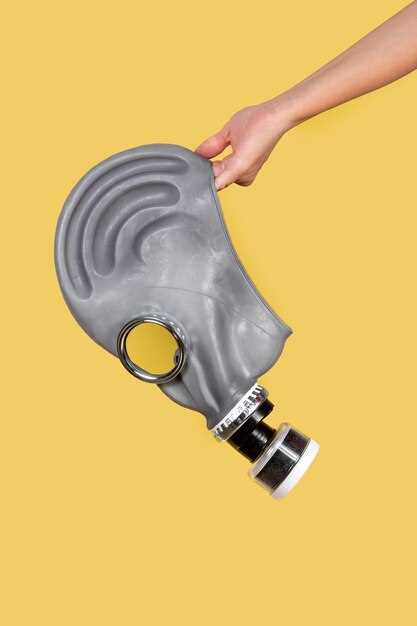
Turbochargers have become an essential component in modern automotive engineering, providing vehicles with enhanced power and efficiency. A turbocharger increases an engine’s air intake, allowing for more fuel to be burned and thus generating more power without significantly increasing engine size or weight. However, selecting the right turbocharger for your vehicle can be a daunting task, given the myriad of options available on the market.
When considering a turbocharger, it is critical to understand key specifications and compatibility with your vehicle’s engine. Different turbochargers are designed to meet specific performance goals, such as low-end torque or high-end power. Factors such as engine displacement, desired horsepower, and driving conditions play a vital role in this decision-making process. Choosing the correct turbocharger not only improves your vehicle’s performance but also ensures reliability and longevity of the engine.
In this article, we will delve into the essential criteria for selecting the best turbocharger for your vehicle. We will explore different types of turbochargers, their features, and performance characteristics. Additionally, we will provide insights into how to match a turbocharger to your specific vehicle type and intended use. By the end, you will be equipped with the knowledge to make an informed decision that aligns with your performance expectations and driving style.
Assessing Your Vehicle’s Compatibility with Different Turbocharger Types

When selecting a turbocharger for your vehicle, assessing compatibility is crucial to ensure optimal performance and reliability. Turbochargers are categorized mainly into three types: fixed geometry, variable geometry, and twin-scroll. Each type has specific characteristics and requirements that must match your vehicle’s engine and setup.
Start by identifying your engine’s make, model, and specifications. This information helps you determine the suitable turbocharger size and type. Fixed geometry turbochargers are simpler and generally easier to install, making them ideal for beginners or standard applications where boost levels remain relatively constant. Conversely, variable geometry turbochargers offer improved efficiency and performance across a wider RPM range, but they may require more extensive modifications to your engine and exhaust system.
Next, consider your vehicle’s intended use. For daily driving, a turbocharger that provides smooth power delivery with minimal lag may be beneficial. In contrast, if you participate in motorsports or off-road activities, a high-performance turbocharger could enhance your vehicle’s power output and throttle response significantly.
Examine the engine’s fuel system and management. Higher performance turbochargers typically require upgrades to fuel injectors, fuel pumps, and engine tuning to handle the additional air and power effectively. Ensure that your vehicle’s engine management system can be calibrated or tuned to accommodate these changes.
Additionally, review space availability in your engine bay. Some turbocharger types and configurations require ample room for installation and proper airflow. Assess the layout of your exhaust manifold and the positioning of the turbocharger to avoid installation issues and ensure that heat management can be effectively maintained.
Finally, consult with experts or community forums specific to your vehicle model. Many enthusiasts share insights and experiences with various turbocharger setups, providing valuable information on what combinations work best and potential pitfalls to avoid.
By thoroughly assessing these aspects of your vehicle, you can confidently choose a turbocharger type that will enhance performance while ensuring compatibility with your existing system.
Understanding Turbocharger Specifications to Optimize Performance Gains
When selecting a turbocharger, comprehending its specifications is crucial for maximizing your vehicle’s performance. Key specifications include compressor size, turbine size, and maximum boost pressure.
Compressor size directly influences airflow and engine performance. A larger compressor can move more air, resulting in higher power potential. However, this must be balanced with engine size and intended use, as oversizing may lead to lag and inefficient performance in some setups.
Turbine size affects how quickly the turbo responds. A larger turbine can produce more exhaust power but may introduce lag. Smaller turbines spool quickly but may limit peak power output. Understanding the relationship between turbine and compressor sizes helps in choosing a setup that optimizes throttle response and overall power.
Maximum boost pressure is another critical spec. It indicates the maximum air pressure the turbo can generate. Exceeding the engine’s capabilities can lead to damage, so it’s essential to match boost levels with fuel type and engine modifications. Selecting a turbo that allows adjustable boost levels can provide flexibility for tuning.
The turbocharger’s efficiency maps are also integral to understanding performance. These maps show how efficiently the turbo will operate at various speeds and pressures. An efficient turbo will improve performance without unnecessarily increasing exhaust temperatures, enhancing overall engine longevity.
Lastly, boost control mechanisms are essential for performance optimization. Options include wastegates, electronic boost controllers, and manual boost controllers. Properly configured boost control ensures consistent performance across different driving conditions, allowing you to fully harness the turbocharger’s capabilities.
In summary, a detailed awareness of turbocharger specifications–such as compressor and turbine sizes, maximum boost pressure, efficiency maps, and boost control–will enable you to choose the most suitable turbocharger for your vehicle, ultimately optimizing performance gains while ensuring reliability.
Installing and Tuning Your New Turbocharger for Maximum Benefit

Installing a turbocharger requires precision and attention to detail to ensure optimal performance. Begin by gathering all necessary tools, including wrenches, sockets, and a torque wrench. When you open your vehicle’s hood, make sure to disconnect the battery to prevent any electrical issues during installation.
First, remove the existing components that block access to the turbocharger installation area. This might include intake piping, exhaust manifold, and various sensors. Take care to label all hoses and electrical connections to ease reassembly.
Next, install the turbocharger by properly aligning it with the exhaust manifold. Tighten the bolts to the manufacturer’s specifications using a torque wrench to avoid any cracking or leaks. Ensure all gaskets are in place to create a tight seal between the turbo and engine components.
After securing the turbocharger, reconnect the exhaust system and intake piping. Check for any potential obstructions that might impede airflow. Install any additional components that come with the turbo kit, such as oil feed and drain lines, ensuring they are securely fastened and free of kinks.
Once installation is complete, tuning the new turbocharger is essential for maximizing engine performance. Start by recalibrating the engine’s ECU to accommodate the increased airflow and boost pressures. This step often requires a professional tuning tool or software that can modify fuel maps and ignition timing.
Monitor air-fuel ratios to ensure the engine runs efficiently. Consider upgrading the fuel injectors and fuel pump to provide adequate fuel delivery under boost. A wideband O2 sensor can help track these ratios in real-time, allowing for precise adjustments during tuning.
After initial adjustments, perform a test drive to evaluate the vehicle’s performance. Pay attention to boost levels, engine response, and any potential knocking or hesitation. Fine-tuning may be necessary; adjustments should be made gradually and incrementally to ensure engine safety and reliability.
Finally, after achieving desired performance metrics, perform regular maintenance checks on the turbocharger system. Inspect all connections for leaks, check oil levels, and monitor boost pressure to ensure longevity and reliability of the turbocharger.
